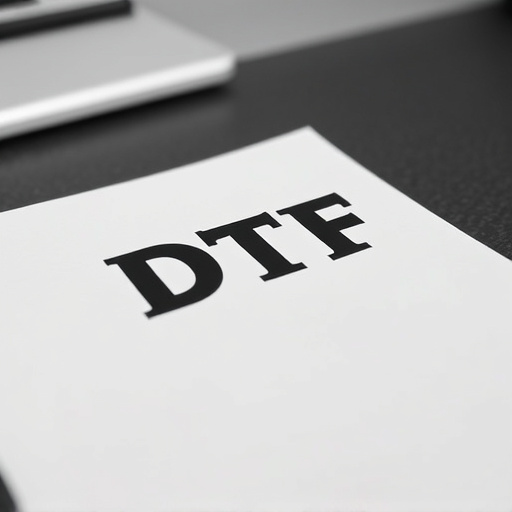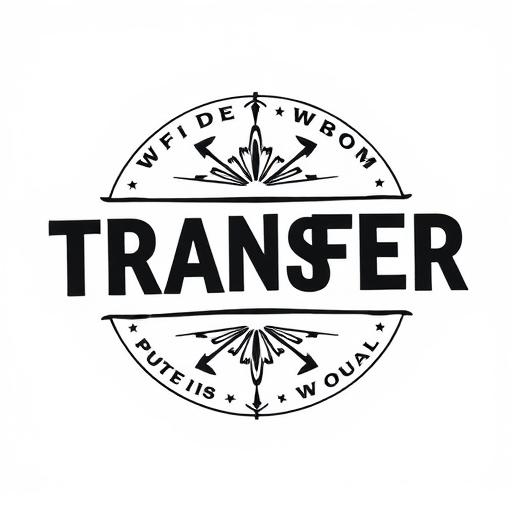The Direct to Fabric (DTF) transfer process is a modern, efficient printing technique for textiles, offering intricate, vibrant prints on various fabrics. The pre-production phase involves optimizing artwork and setting up printers and equipment. The DTF process includes digitally preparing designs, printing onto scrap material to test settings, and then transferring the design using heat and pressure. Post-production checks ensure quality through rigorous testing. Timely order completion requires managing inventory, servicing equipment, and efficient planning due to sensitive alignment and curing times. Strignt post-production assessments guarantee exceptional DTF transfer and print quality.
“Unleashing the efficiency of Direct to Fabric (DTF) transfer printing involves a meticulous production process with distinct stages. This article serves as your comprehensive guide, offering insights into every facet of DTF transfer, from initial concept to final output.
We’ll explore the pre-production phase, where preparation is key, and delve into the step-by-step production process behind DTF printing. Understanding time considerations, common delays, and quality assurance checks is essential for successful DTF orders, ensuring vibrant, precise prints on fabric.”
- Understanding DTF Transfer: A Quick Overview
- Pre-Production Phase: Preparing for DTF Prints
- Production Process: Step-by-Step Guide to DTF Printing
- Time Considerations: Estimation for Each Stage
- Common Delays and How to Mitigate Them
- Post-Production Checks: Ensuring Quality Assurance
Understanding DTF Transfer: A Quick Overview

The Direct to Fabric (DTF) transfer process is a cutting-edge printing technique revolutionizing the textile industry. This modern method allows for high-quality, precise printing directly onto fabric surfaces, offering a fast and efficient alternative to traditional methods. DTF involves several key steps: first, a design or image is prepared digitally, then it’s transferred via specialized equipment onto a fabric medium, typically using heat and pressure. This process enables the creation of intricate, vibrant DTF prints on a variety of fabrics, from cotton tees to polyester jackets.
Understanding DTF Transfer’s capabilities is crucial for businesses looking to streamline their production processes. By adopting this technology, companies can significantly reduce lead times for custom apparel and merchandise, meeting demands promptly. Moreover, DTF Printing offers cost-effectiveness, especially for small-batch orders or one-off designs, making it a versatile option for both startups and established brands aiming to enhance their product offerings with unique, on-demand prints.
Pre-Production Phase: Preparing for DTF Prints

The pre-production phase is a crucial step in the process of creating DTF (Direct to Fabric) transfers, setting the foundation for efficient and high-quality printing. This period involves careful preparation to ensure the best outcomes for your DTF prints. It begins with designing or sourcing the artwork that will be printed onto the fabric. The artwork needs to be optimized for DTF printing, ensuring it meets the required resolution and color specifications.
During this phase, printers also need to ready their equipment and work area. This includes setting up the DTF printer, loading the appropriate fabric types, and testing prints on scrap material to fine-tune settings. Proper preparation here directly impacts the success of the entire production run, ensuring that when it’s time for actual printing, the process flows smoothly, delivering vibrant and precise DTF transfers.
Production Process: Step-by-Step Guide to DTF Printing

The production process for DTF (Direct to Fabric) printing involves a series of precise steps to ensure high-quality transfers. It begins with designing or sourcing the artwork that will be printed onto the fabric. This digital artwork is then prepared for printing, ensuring it meets the necessary specifications for DTF transfer. The key step in this process is setting up the printer and ink system, requiring careful calibration to achieve consistent results across batches.
Once ready, the DTF transfer process commences with placing the fabric on a flat surface or heat press. The printer then deposits the ink directly onto the fabric, fusing it into the fibers for a durable finish. After printing, the fabric undergoes curing, allowing the inks to set and dry properly. This step is crucial for ensuring vibrant colors and long-lasting prints. Finally, the DTF transfer is carefully removed from the fabric, leaving behind a crisp, professional design ready for various finishing touches or further processing.
Time Considerations: Estimation for Each Stage

Estimating the production time for transfer orders involves understanding the distinct stages involved in the DTF (Direct to Fabric) transfer process. Each stage requires meticulous attention and precise timing to ensure high-quality results. Initially, designers need to finalize the artwork, ensuring it’s optimized for DTF printing. This includes vectorizing graphics and setting the right color profiles. Once the design is ready, the printing phase commences, where specialized machines produce the DTF prints, typically taking around 15-30 minutes per design, depending on complexity.
Following printing, the cured material undergoes a critical inspection to check for any defects or misalignments. This quality control step is crucial and can extend the total time by an average of 10-15 minutes per DTF transfer. After passing inspection, the fabric is prepared for cutting, which involves carefully trimming away excess material. This precise cutting process is both timing-sensitive and dependent on the complexity of the design, generally adding 5-10 minutes per transfer. Lastly, post-cutting, the transfers are packaged, ensuring they remain intact and ready for distribution or further processing, which can take approximately 3-5 minutes per order.
Common Delays and How to Mitigate Them

In the dynamic world of production, especially with DTF (Direct to Fabric) transfer printing, timely order completion is paramount. Common delays can stem from various factors, such as material availability, equipment maintenance, and design complexity. For instance, DTF prints require precise alignment and curing times, which can be affected by environmental conditions or machine calibration. To mitigate these issues, businesses should maintain robust inventory management, scheduling regular equipment servicing, and implementing efficient design review processes.
Additionally, staying agile with production planning is key. Flexibility to accommodate unexpected demands or supply chain disruptions can significantly reduce turnaround times. Utilizing advanced printing technologies that offer faster processing without compromising quality, like modern DTF printers, also plays a crucial role in meeting tight deadlines. Proactive communication between departments and suppliers ensures everyone is aligned, allowing for smoother operations and quicker order fulfillment.
Post-Production Checks: Ensuring Quality Assurance

After the production process is complete, conducting thorough post-production checks becomes paramount to guarantee the superior quality of DTF Transfers and DTF Prints. These checks are designed to identify any potential issues that might have occurred during manufacturing, ensuring each final product meets the desired standards. Skilled technicians inspect every DTF Transfer for consistency in color, clarity of design, and proper alignment. Any deviations or defects are meticulously documented and addressed, demonstrating a commitment to quality assurance.
Additionally, print reliability is assessed by evaluating the durability and vibrancy of DTF Prints. These tests involve rigorous washing, lightfastness, and dimensional stability checks to simulate real-world conditions. By implementing these meticulous post-production measures, manufacturers can confidently assure customers of the exceptional quality and longevity of their DTF Transfers and prints.














